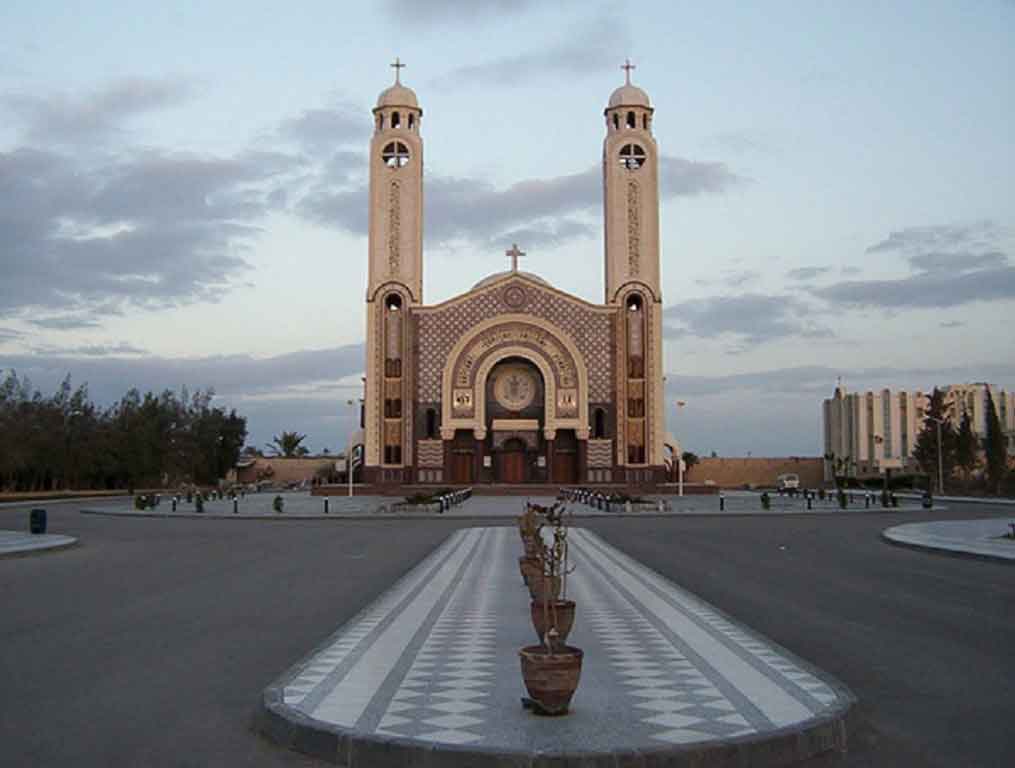

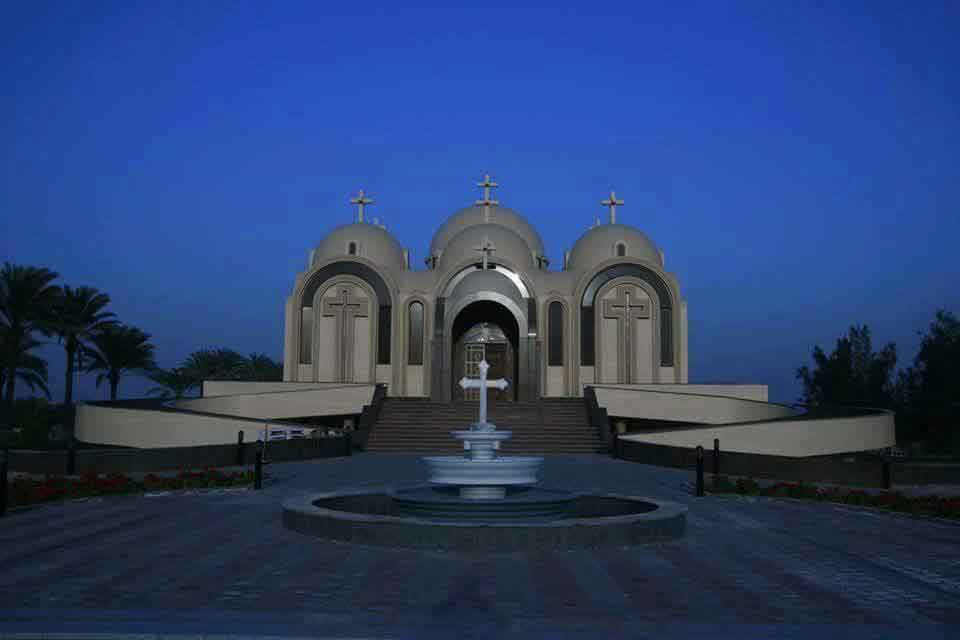
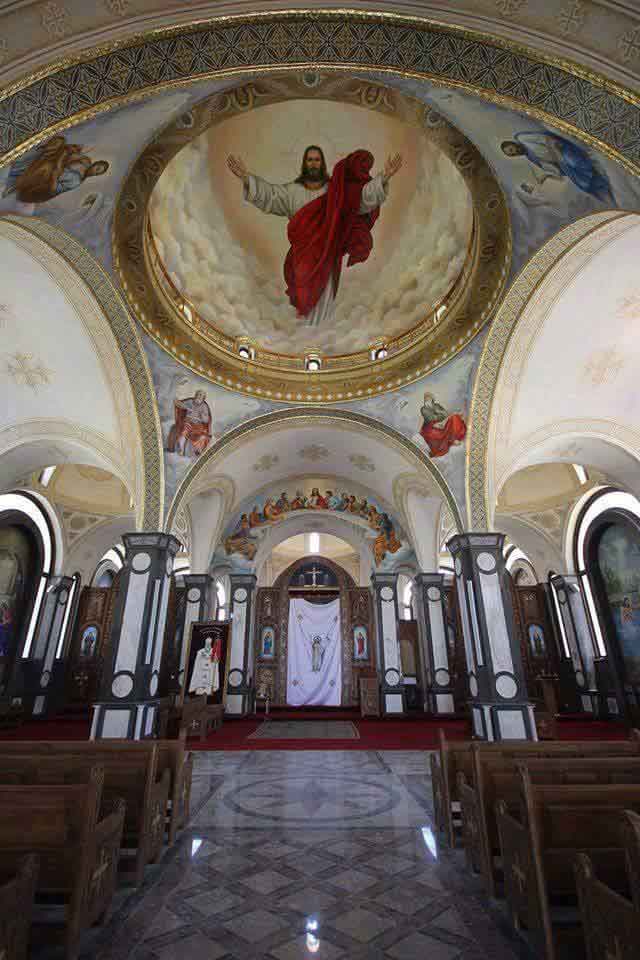


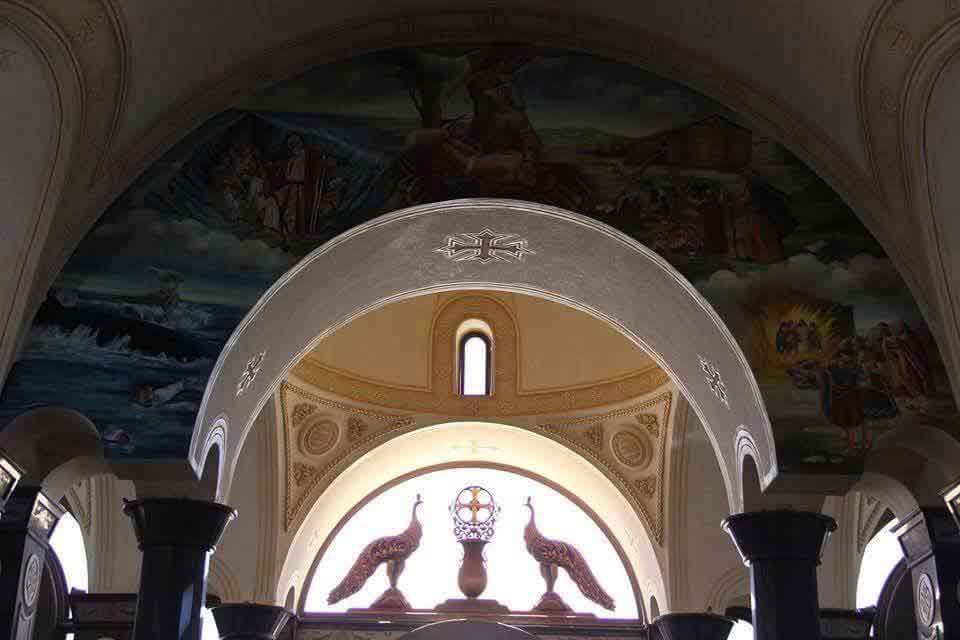

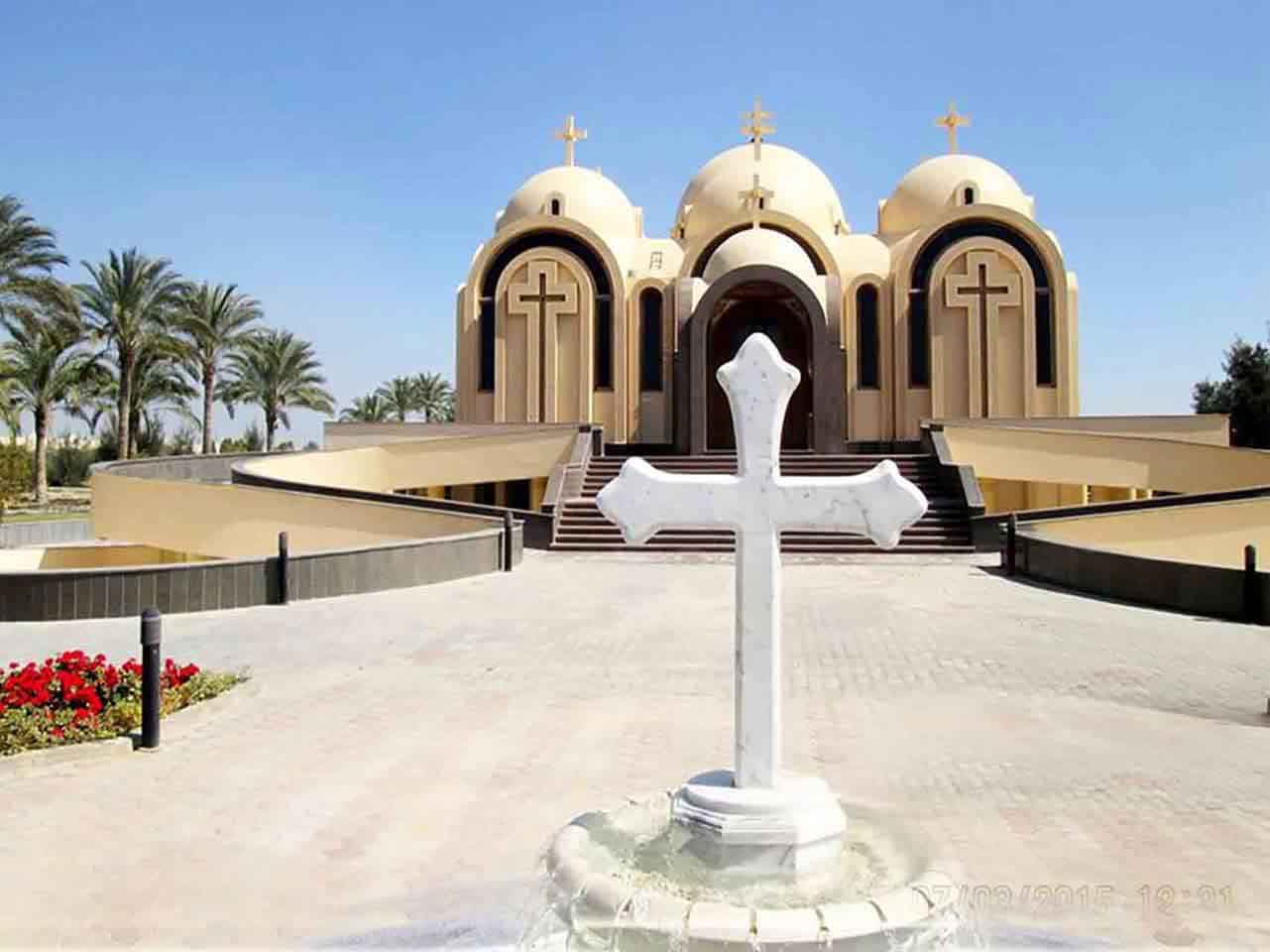
in Mariout Desert
His father was a wali in the Roman era over the state of Africa and he was wealthy and joined Mina in the Roman army and became a soldier and adhered to the Christian faith despite the persecution he suffered, which ultimately led to martyrdom and he transferred his remains from the soldiers to a camel and on the way he stopped in the current monastery area and considered this a desire It is possible for the saint to be buried in this spot where there was a source of water and bury the saint in the area. Frying monks were installed, then a luxurious church in the Byzantine period.
Archeological excavations began in 1905 by the German scientist “Kaufmann”, who was guided to the site by a Bedouin boy. Around it are landfills, wells, foundations of houses, mills and shops.
The area was famous for its nice-looking bottles of Mariot pottery depicting the saint standing between two camels, and it was filled with spring water that gained holiness or from jellyfish oil that lit the tomb of the saint. The ancient monastery of Saint Marmina is one of the most important archaeological areas in the world, as the Archaeological Zone of Marmina was registered in the register of the most important archaeological areas of UNESCO, to be the only region registered in the World Organization in Alexandria Governorate.
The importance of the region has increased after the establishment of the new monastery and the arrival of tourists there. .
